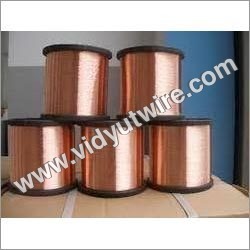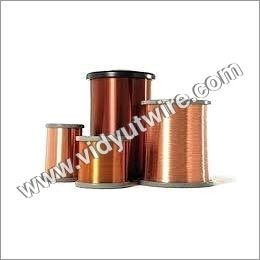We are manufacturer, exporter, supplier and trader
Bunched Tin Copper Wire
1000 INR/Kilograms
Product Details:
- Product Type Tin Copper Wire
- Material Copper
- Usage Industrial
- Color Copper
- Click to View more
X
Bunched Tin Copper Wire Price And Quantity
- 1000 INR/Kilograms
- 1 Kilograms
Bunched Tin Copper Wire Product Specifications
- Copper
- Copper
- Industrial
- Tin Copper Wire
Product Description
Bunched tin copper wire is a type of electrical wire that consists of multiple tin-plated copper strands grouped or bundled together. The tin plating on the copper strands provides enhanced conductivity and corrosion resistance, making it suitable for various electrical applications. Bunched tin copper wire is commonly used in industries such as electronics, telecommunications, automotive, and power distribution.
FAQs :
Q: What are the advantages of using bunched tin copper wire?
A: Bunched tin copper wire offers several advantages in electrical applications. The tin plating enhances conductivity, allowing for efficient transmission of electrical signals or power. It also provides increased resistance to corrosion, protecting the wire from environmental factors. The bunched configuration of multiple strands enhances flexibility and durability, making it easier to handle and install.
Q: In which industries is bunched tin copper wire commonly used?
A: Bunched tin copper wire finds applications in various industries. It is widely used in electronics manufacturing for wiring circuit boards, interconnecting components, and creating reliable connections. It is also used in telecommunications for high-speed data transmission and in automotive applications for wiring harnesses, sensors, and electrical systems. Additionally, it is utilized in power distribution systems and for general electrical installations.
Q: What factors should be considered when selecting bunched tin copper wire?
A: When selecting bunched tin copper wire, factors such as wire gauge (thickness), insulation type, voltage rating, and current-carrying capacity should be considered. These specifications should match the requirements of the specific application and comply with relevant industry standards or regulations.
Q: Can bunched tin copper wire be used for outdoor or harsh environments?
A: Bunched tin copper wire can be used in outdoor or harsh environments, provided it is appropriately rated and protected with suitable insulation. However, it is essential to consider factors such as exposure to moisture, UV radiation, temperature extremes, and mechanical stress. Selecting wire with adequate insulation and protection against these elements is crucial for long-term durability and performance.
Enter Buying Requirement Details






 Send Inquiry
Send Inquiry Send SMS
Send SMS